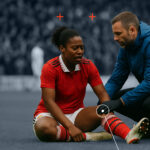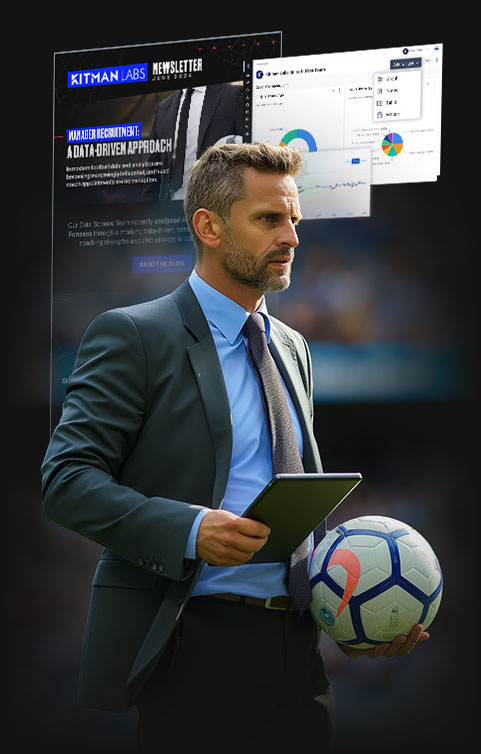Raphael Brandon: The success to what we’ve implemented with England cricket and the collaboration we’ve had with the counties to help prepare the England players. So far this summer, has been the fact that we’ve taken a package approach. So, we’re not just betting all our chips on testing, for example, we’re putting a lot of measures in place. I think all those measures add up, and almost like maybe layers of risk mitigation. And by the time you put all those layers together, then you’ve got actually got quite a solid environment from a health and safety, player and coach safety, support staff safety point of view.
And then obviously, the primary driver in this is that cricket or sports professional, sport doesn’t become a transmitter that places a burden on the rest of the community and wider society that was that was always firmly in our mind right from the start. So, a comprehensive package, which involves education an official opt-in process following those education. elements, quite a large amount of venue management relative to normal business in terms of risk mitigation and organisation of the flow of people around the grounds and training venues, very high hygiene standards, as you’d expect, I’m sure most people are doing.
Actually with cricket, we can do it with strict social distancing. So we’re keeping that in, in this training phase. And there’s been a large amount of replanning and implementation of training, and maybe I can talk in detail that a little bit later on, and then quite a critical component as well as the daily symptom screening. So, you know, it’s a really, really nice layer of risk mitigation in terms of, if somebody would prevent somebody from turning up in the first place with potentially a higher chance of having symptoms that could spread, then obviously, you’re taking quite a lot of risk away from the environment itself.
Ongoing communication and then another key element of it I would say is making sure there’s clear roles and responsibilities. So identified people, for the venue, identify people in terms of the medicine, identify people in terms of monitoring, the daily screening, etc, etc. and getting that real clarity in terms of the roles and responsibilities.
How have you gone about being successful in terms of venue management, regarding medical and biosecurity of venues and training locations?
Raphael Brandon: Yeah, so Well, I mean, it’s split into two phases, really. So the phase that will start next week for the England team is a genuine bio-secure environment that involves antigen Covid testing on a regular basis. So, that’s the test of ‘Do you have it now?’ Rather than have you had it previously, maybe.
A genuine bicycle environment, the training phase that we’ve been through so far, though, over the last five years has been more of a very highly risk mitigated work environment. I think that’s involved a start, you know, “Ctrl, Alt Delete” on the risk mitigation of the site, a much, a skeleton staff. And really probably the best way to describe it is implementing quite ruthlessly, a principle of ‘is this activity essential or not?’ ‘Is this person essential or not.’ And if you didn’t implement that, then you clean out a lot of people from the process, you clean out a lot of activity from the process.
Then we’ve been able to deliver quite a controlled environment in terms of the flow of the players and staff into the ground, then making sure they’re safe on arrival with the screening, the the organisation of training in terms of the flow of the timetable, and the compartmentalising of people in terms of functional areas. We’ve been calling it, around the venue and only using the weight room and the indoor areas which are higher risk than being outdoors, if we really need to so essential pieces of weight training equipment, for example, only rather than just by default going into the gym for an hour and a half with with a group of people and, we’ve basically encapsulated that with this sort of phrase, which is called “Get in train, get out”.
How have you dealt with the any potential player reluctance or hesitations to return to training, or if there were concerns for themselves or their families?
Raphael Brandon: Yeah, I’m reasonably pleased with we’ve got quite a lot of effort into our communications. So and and a lot of the guys have worked really hard in the England science and medicine team to put presentation together and we’ve hosted zoom calls to multiple players and coaches. The other thing that we’ve done is we’ve followed up that up with individual conversations. So, we actually designed a ‘return to environment questionnaire’ and the wellbeing psychology guys, are they literally running round everybody, you know, 50 odd players that have been requested to return to train to prepare for England and you know, 20-30 odd staff. So I think it’s been quite a good effort to have achieved that.
Then a lot of communication in terms of the, there’s a lot more admin and logistics around training than there normally is at the moment. So we’ve had a lot of proactive communication around that. And I think in those conversations, players then start to get an understanding of what’s going on. And then our, you know, our Managing Director, actually, Giles has also been really proactive with education with his sort of communication as well. So, yeah, it’s just basically, I don’t think you can over communicate at the moment. It’s all so new. Yeah.
How are you managing the whole medical liability element? How does that come into play when informing people clearly of the steps you’re taking, etc.
Raphael Brandon: Yeah, that’s right. I think the it’s not my area of expertise. But if I just sort of pass on the elements, what we don’t I think the key one is the opt in process within with an official, you know, online signing document, that process that follow the education, but also to sort of get to that point. We’ve used occupational health consultants, we’ve everything’s been done with the ECB, England, Wales, Cricket Board, legal team and the England Wales cricket board, people team, so effectively the HR function.
How have you overcome the challenges of replanning training? o as a group of coaches and practitioners, how have you ensure that dealing with the COVID issue hasn’t had such a damaging impact on performance and preparation?
Raphael Brandon: Yeah, well, well, obviously it has really, I mean, we can’t, we can’t say so the fact that we have been training as normal. So if we go back to late March, early April, that was kind of full on lockdown. And the England science and medicine team and the lead generation coach in particular, were mobilised really fast on home training programmes, and we actually got some basic kits sent around to players that were missing some some items of stuff and they’ve been on home-base training, monitor-training pretty much since the start of lockdown, and a lot of players have done really, really well and actually in certain elements of their fitness, but you know, General aerobic running base fitness, you know, some of the guys are in a really brilliant place and kind of setting PBs in that space. I think that’s quite common across a number of teams for sports.
Then once we sort of got to the situation where those government guidelines were released in early May, that allowed elite and professional sports returned to facility-based training, sort of out of lockdown facility-based training. That’s when we started implementing our own methods that I’ve, I’ve spoken about already. And we started there on a very individual basis, taking small steps so that we could learn how it works in the venues and did very small groups and it was very spread out a particular point in time and, you know, I should say if it’s sort of going out publicly that the the, this hasn’t been delivered by England staff has been delivered in collaboration with county staff and they’ve done an absolutely brilliant job, kind of mobilising their own people to then help deliver to a set of England players that have been preparing to go into this behind closed doors scenario, so it was done quite carefully. It was done sort of small, and then we’ve built it up. And then now I mean, I’ve just come from one of the training venues today and you’re almost doing pretty much normal training on an individual basis. Then next week, the England players in preparation for the Test series, which is now confirmed, will will probably go behind closed doors with a full testing programme bio-secure and then the training is going to look very much as normal. So we’ve had a graduated return essentially.
Is there anything that that you feel obviously cricket, as you as you have suggested, perhaps in certain scenarios lends itself to social distancing and hence, maintaining a level of safety? Are there any commonalities you share with other fellow high performance sport practitioners that might be applicable across the piece?
Raphael Brandon: Yeah, well, I think I think all your load management principles apply. The, what’s been interesting for us is, is whilst the intensity and the the specific elements of the general preparation that was going on in lockdown that the home fitness programmes, if you like, they were they were being done, that doesn’t actually add up to that much five hourly workouts a week or five or six of the week. You know it for those that are familiar with sort of session RPEs or whatever, but sort of weekly workloads weren’t really that high.
Being cricket training, and cricket matches his multiple hours, of a lot of low intensity work, but also some very high intensity, very dynamic work. So there’s quite a big gap to bridge to that competition specific readiness and ability to tolerate those workloads. So I think it’s, it’s just doing what people always do, which is work back from the match demands and build up to those things. And we’ve tried to do that as best as we can within within the rules of cricket the the big constraint for cricket is sharing the ball. Because it does obviously it’s a it’s a hand-touch multi-touch contact points. So that’s the big hygiene thing. So we’ve implemented a one-skin one-ball risk strategy. I don’t know if I mentioned earlier in this piece, but that’s how we’ve mitigated risk so we can just get training on. And that’s worked up until today, but you can’t have practice matches unless people share the balls and things like that. So that’s that’ll take place in the behind closed door scenario for the international team.
How you would reflect on this period pretty unprecedented for everyone in the community, but must be the same for high performance sport, too.
Raphael Brandon: Yeah, well, we’ve had cricket dismantled and reassembled temporarily, or temporarily for the medium term, perhaps but yeah, it’s been it’s been quite a challenge actually, you know, the medics have done a really good job. And I think the medics have collaborated and worked with the UK Sport and DCMS to sort of navigate a pathway by which elite/professional sport could kind of get an accelerated return, obviously has given us the framework, but then it’s taken a lot of planning from the sort of performance support and coaching side of things to actually implement that and implement that safely. And it’s taken a lot of work and commitment actually, on the usual people that have to do that, you know, the lead physios. They’re sort of the are often ‘a big cog’ in the, in the machine aren’t they in terms of the hub of the machine, rather, in terms of how critical they are to get everything sorted. So, yeah, they’ve done an excellent job in that respect as well. So, yeah, it’s, it’s been very interesting. I think when when there’s a really motivating and aligning goal which ‘get cricket back on the again, get cricket back on the telly’. And obviously quite an interesting technical, in this case medical challenge. Can we do it safely? Can we do it? Well, can we do it in a socially responsible way? Then it’s it’s been very motivating, but obviously we’ve been operating in a in a high degree of uncertainty as well. So that’s what’s made it challenging. But yeah, it’s, hopefully we’ll do all right in the end.
To listen to the podcast eposide, click here.




